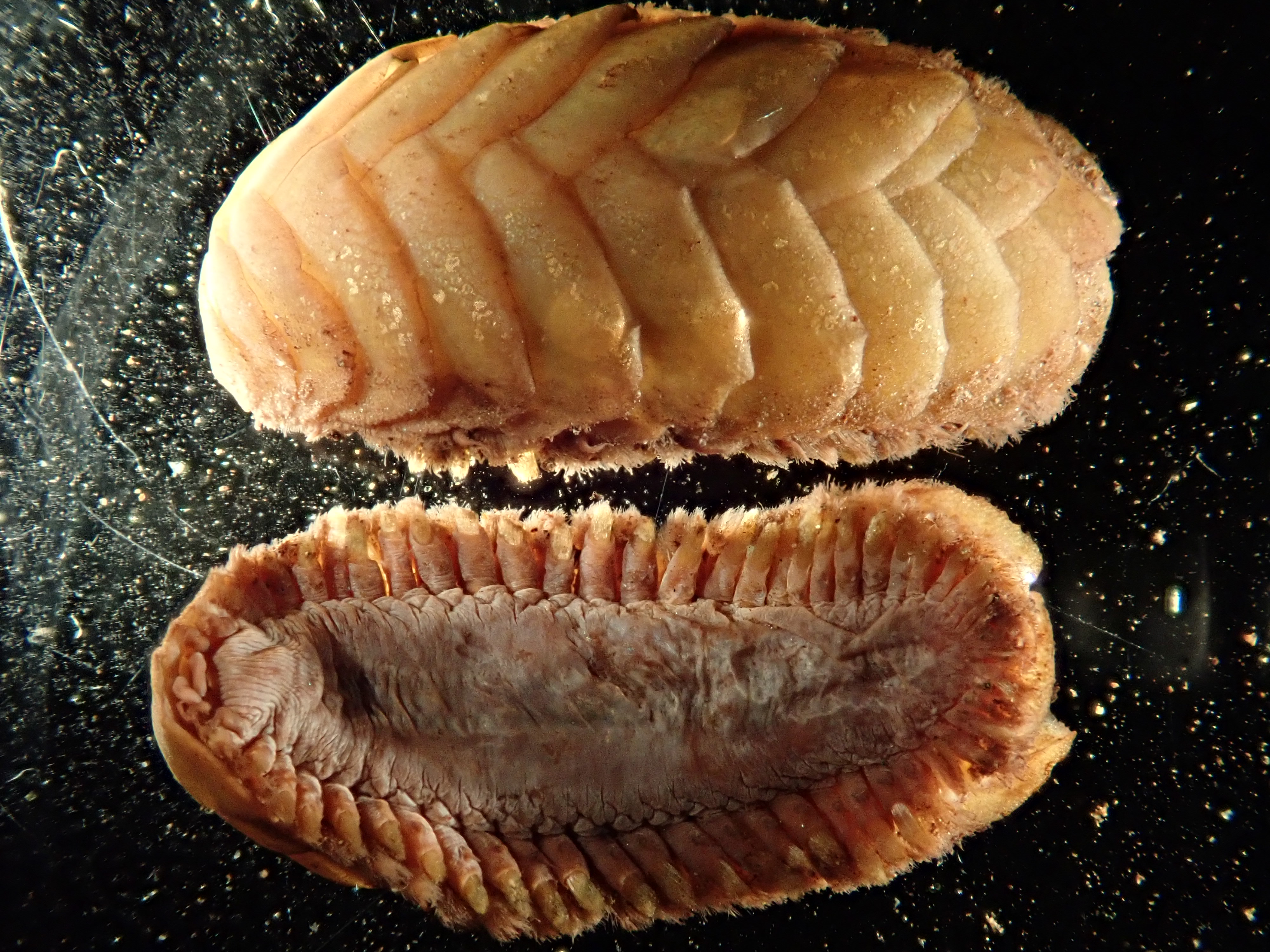Eyeless worm a window into our diverse ocean
A worm that feeds on bacteria and has no eyes is one of the standout stars of almost 600 unfamiliar and potentially new ocean species identified at NIWA in the past year.
The worm was found burrowed into a piece of sunken wood found North East of the Chathams group from 900 m depth last year and brought back to New Zealand for further investigation.
Every few weeks NIWA receives an assortment of these ocean invertebrates collected by staff on board research vessels undertaking fishing trawl surveys or by observers on commercial fishing boats. They pick out unfamiliar animals from the bycatch or specimens that have not previously been spotted in the area.
The sack of samples is unpacked by the staff of NIWA’s Invertebrate Collection (NIC) and the contents distributed to species experts either at NIWA or other institutions for identification. This identification project is funded by Fisheries New Zealand and NIWA has recently submitted its latest project report.
NIC manager Sadie Mills says staff on research vessels and fisheries observers use identification guides to help them to identify common species and over the past few years have become much more proficient at what they do.
“Every report we are finding new species and new records of species in different locations. It is really exciting each time we receive a fresh lot of samples.”
“These are opportunistic samples gathered during fisheries research surveys and commercial fishing activities but without them we wouldn’t know as much about the benthic diversity in our region.”
The project is led by NIWA fisheries scientist Di Tracey who, with a team of experts, has created the identification guides. She says the guides are important because the ships sometimes operate in remote areas where there are few other opportunities to discover the breadth of biodiversity in the region.
“More specimens enables experts to better identify them. There is a lot of variation and it’s not ideal to have just one sample.”
NIWA marine biologist Dr Geoff Read
is an Annelida (worm) expert and examined the worm specimen
and determined it was most likely a new species of
Thermiphone scale worm. Thermiphone belong to the uncommon
deep-water family Iphionidae and are not at all
earthworm-like but instead broadly oval, rather like a large
wood louse.
Only 13 species are known globally, yet they are a very distinctive-looking group with thick scales divided into polygons with minute areolae. They have no eyes, are usually found associated with hydrothermal vents, and seem to graze on microorganisms and bacteria.
Once identified, samples like this are then catalogued, preserved and placed in the NIC database which is a rich source of research material for people from all over the world. A report from a recent visit by a Japanese researcher noted the NIWA invertebrate collection held one of the biggest number of deep-sea zoantharian coral specimens “largely thanks to the scientific observer sampling programme”.
In the past year 583 invertebrate samples were authoritatively identified which included several new species and records of species new to the region.
“The continued discovery of undescribed taxa in observer and research trawl material being returned is testament to underscores the ability of vessel staff to identify unusual organisms and the value of this material for our ongoing discovery of New Zealand deepsea fauna,” Ms Mills says.
The NIWA Invertebrate Collection
is based in Wellington and contains more than 300,000
samples including corals, sponges, crustaceans, anemones and
amphipods.



 NIWA: Ship Anchors May Cause Extensive And Long-lasting Damage To The Seafloor, According To New Research
NIWA: Ship Anchors May Cause Extensive And Long-lasting Damage To The Seafloor, According To New Research New Zealand Customs Service: A Step Forward For Simpler Trade Between New Zealand And Singapore
New Zealand Customs Service: A Step Forward For Simpler Trade Between New Zealand And Singapore Horizon Research: 68% Say Make Banks Offer Fraud Protection
Horizon Research: 68% Say Make Banks Offer Fraud Protection NZ Banking Association: Banks Seek Government Support For Anti-Scam Centre
NZ Banking Association: Banks Seek Government Support For Anti-Scam Centre National Road Carriers: Praises NZTA State Highway Investment Proposal Turnaround
National Road Carriers: Praises NZTA State Highway Investment Proposal Turnaround Greenpeace: Cameras Reveal Mass Underreporting Of Dolphin, Albatross And Fish Bycatch By Commercial Fishing Industry
Greenpeace: Cameras Reveal Mass Underreporting Of Dolphin, Albatross And Fish Bycatch By Commercial Fishing Industry



